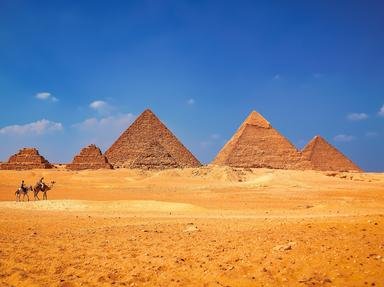Quiz Answer Key and Fun Facts
1. An obligatory question as to when Egypt was founded? Probably not... as it is older than accurate records exist. However, throughout those thousands of years, which of the following systems of government has it never had?
2. For thousands of years, Egypt has not had such good relations with its neighbour to the northeast - Israel. Despite long years of bad blood, in 1977 an Egyptian president went over to Israel and this led to the first real peace treaty between these two nations. What was the name of that president?
3. In 2015, plans were made to move the Egyptian capital from Cairo. What was the main reason for this decision?
4. While most of Egypt is located in Africa, it does have one section that is in Asia. What is this region called?
5. Does the Sahara Desert reach all the way into Egypt?
6. Alexandria is an important and ancient Egyptian city on the coast of the Mediterranean. Which of the following famous landmarks was not located in Alexandria?
7. In southern Egypt, a great dam was built between 1960 and 1970 on the Nile. What is this dam called?
8. Egypt's southern border is with Sudan. It is indisputably defined as the 22nd parallel.
9. Originally called Ismailia Square, this clearing in Cairo became the symbol for liberation in Egypt, in 1919, in 1952, again in 2011, and yet again in 2013. What is it called?
10. Egypt is well-known for the pyramids - great tombs for the ancient pharaohs. In the pyramid complex at Giza there is an equally iconic carving, half lion with a human head. What is it called? I know you 'nose' the answer...
Source: Author
LeoDaVinci
This quiz was reviewed by FunTrivia editor
agony before going online.
Any errors found in FunTrivia content are routinely corrected through our feedback system.
